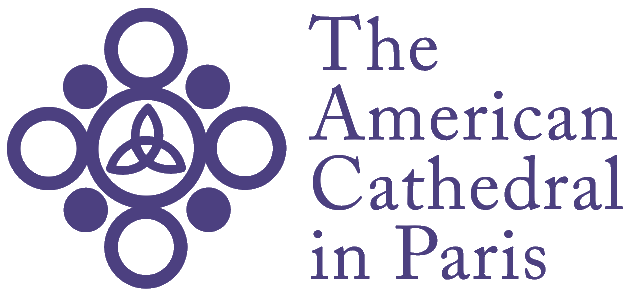The Great Organ
The Cathedral's Great Organ, built in 1887 by the prestigious French firm Aristide Cavaillé-Coll, was inaugurated on October 5th, 1887, by Alexandre Guilmant. It has been suggested that Marcel Dupré is the person most responsible for the evolution of the instrument, which is still one of the largest in Paris: it was Dupré who acted as consultant, first in 1922, again in 1930, then again in the 1950s, with Maurice Duruflé. The latest rebuild was completed in 1993 by the organ firm of Bernard Dargassies with the generous support of the Paulé Foundation and other Cathedral members. The organ was rededicated on February 21st, 1993, and re-inaugurated on May 18th, 1993, by Marie-Madeleine Duruflé, and on May 30th, 1993, by Marilyn Keiser.
Pipes of the organ
A small, mechanical-action organ, built by the French firm of Erwin Müller, was placed in the rear gallery in 1967. In 1993 Monsieur Dargassies replaced this organ and made it part of the Chancel Organ: the Cathedral's Grandes Orgues is actually one organ in two parts. The Grand Choeur division "pulls the sound of the main organ into the nave of the Cathedral, and the two act as one," in the words of former Canon for Music, Edward J. Tipton.
Since the 1993 rebuild, the organ has had a powerful and positive effect upon Cathedral services. In addition, many visitors and visiting organists have commented on the beauty and personality of its tone and the variety of sounds. A loyal group of admirers can be found gathered near the console to hear the closing voluntary every Sunday!
Specifications of the Great Organ
Renewing and renovating the Organ
Detail of the inside of the organ. Some pipes are tied together haphazardly to keep them upright. Others are dented or broken, some taken out entirely and stored behind the working pipes.
Given the excellence of the music at the American Cathedral in Paris, it may appear that the historic organ, built in 1887, is in good shape. In fact, only a part of the organ can be played currently thanks to the ingenuity and skill of our organists. They work around problematic stops and pipes and make quick, temporary repairs. The last renovation of our instrument was in 1993 and it is now time to undertake the very costly dismantling and cleaning of pipes and replacement of deteriorated mechanical parts. In addition to repairs, we plan to address design issues so that the unique Cavaillé-Coll sound can better support singing by the choir and congregation and allow for proper regular maintenance.
In 2020, former Dean Lucinda Laird appointed a committee to begin laying the groundwork of what is now a full-fledged capital campaign to renovate our historic Cavaillé-Coll pipe organ. The First Fridays virtual concert series (see below) was launched to showcase the organ and the excellence of the Cathedral’s music program. We entreat you to affirm your gratitude for Lucinda’s ministry and your love of the Cathedral’s incredible music by supporting this capital campaign.
First Fridays Organ Concert Series
This series has finished, but the concerts are still available to the public.
The First Fridays Organ Concerts Series is a year-long series of monthly organ concerts celebrating its historic music ministry through its many distinguished former organists. These alumni and alumnae of the great Cavaillé-Coll organ at the American Cathedral perform on their home instruments in the United States, the United Kingdom, France, and Germany, and more on the first Friday of each month.
Organists include Ned Tipton, Nathan Laube, Frédéric Blanc, Edward Dean, Edmund Aldhouse, Samuel Liégeon, William Buthod, Carolyn Schuster Fournier, and more. During their concert, each organist speaks for a few minutes about their years in Paris at the console of the Cavaillé-Coll organ that has lifted the Cathedral’s worship since the end of the nineteenth century.
The series is organized by Canon for Music Zachary Ullery and Cathedral organist Andrew Dewar. The half-hour concerts are free, but registration is required. Registrants are sent links to the program as well as more information about the organist, the church and organ where the concert takes place, and the repertoire for the evening.





